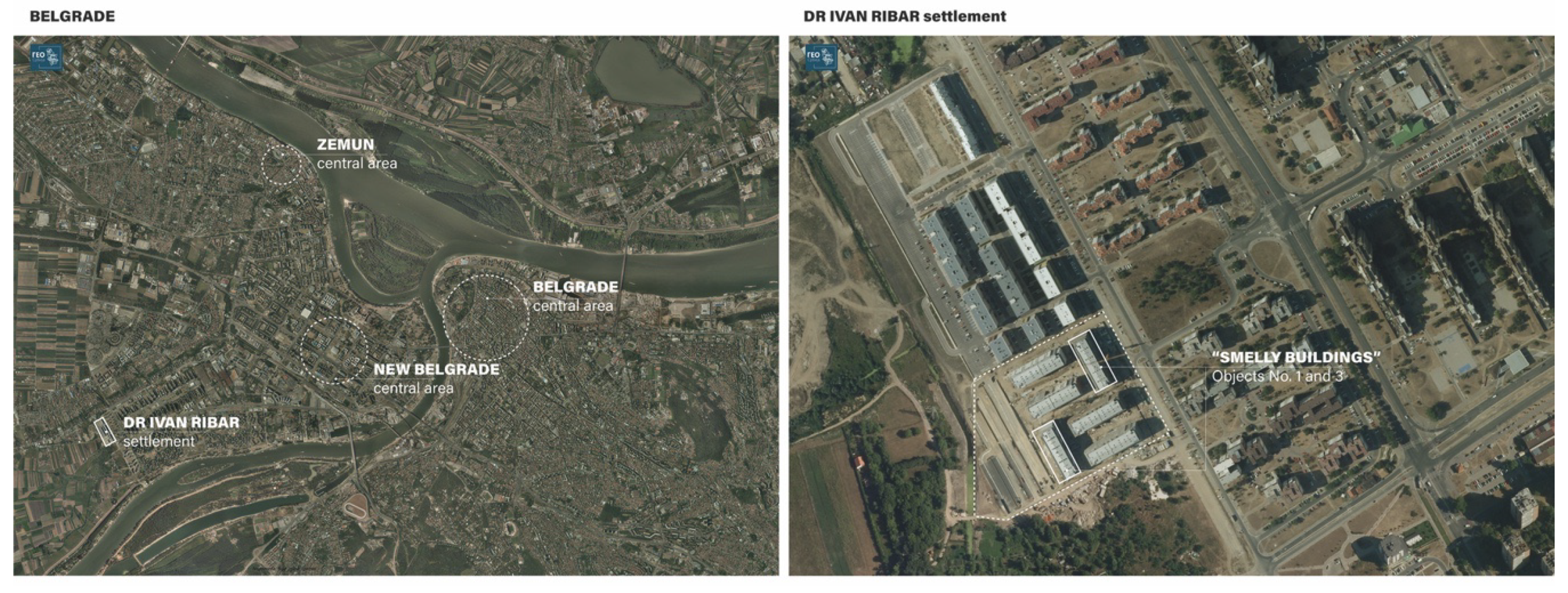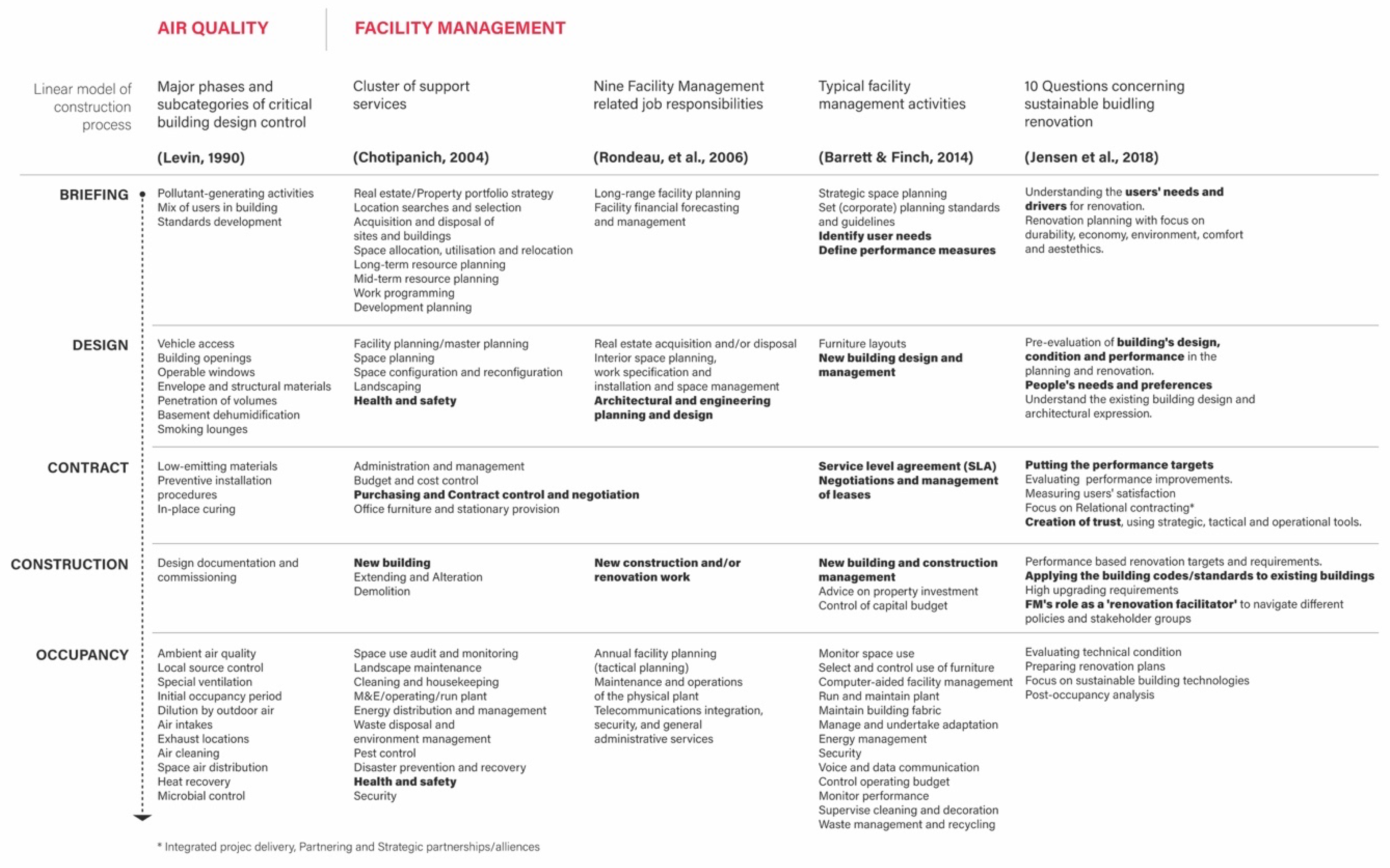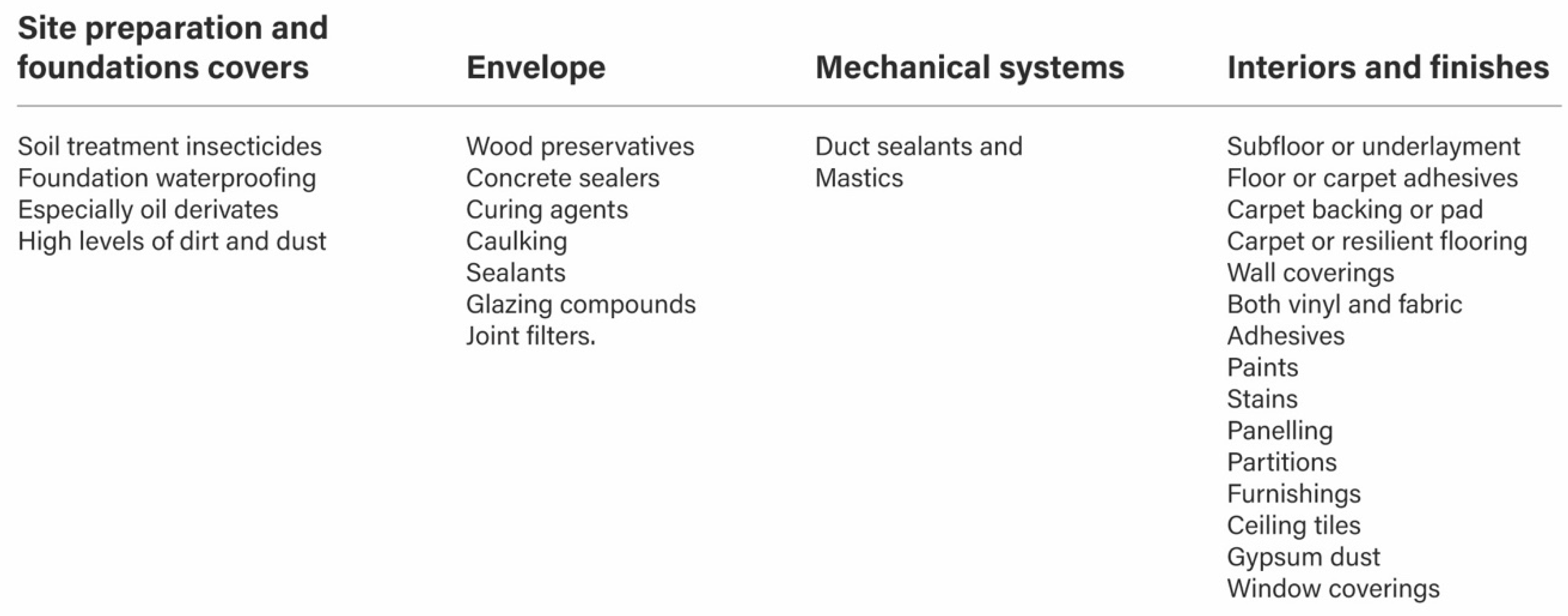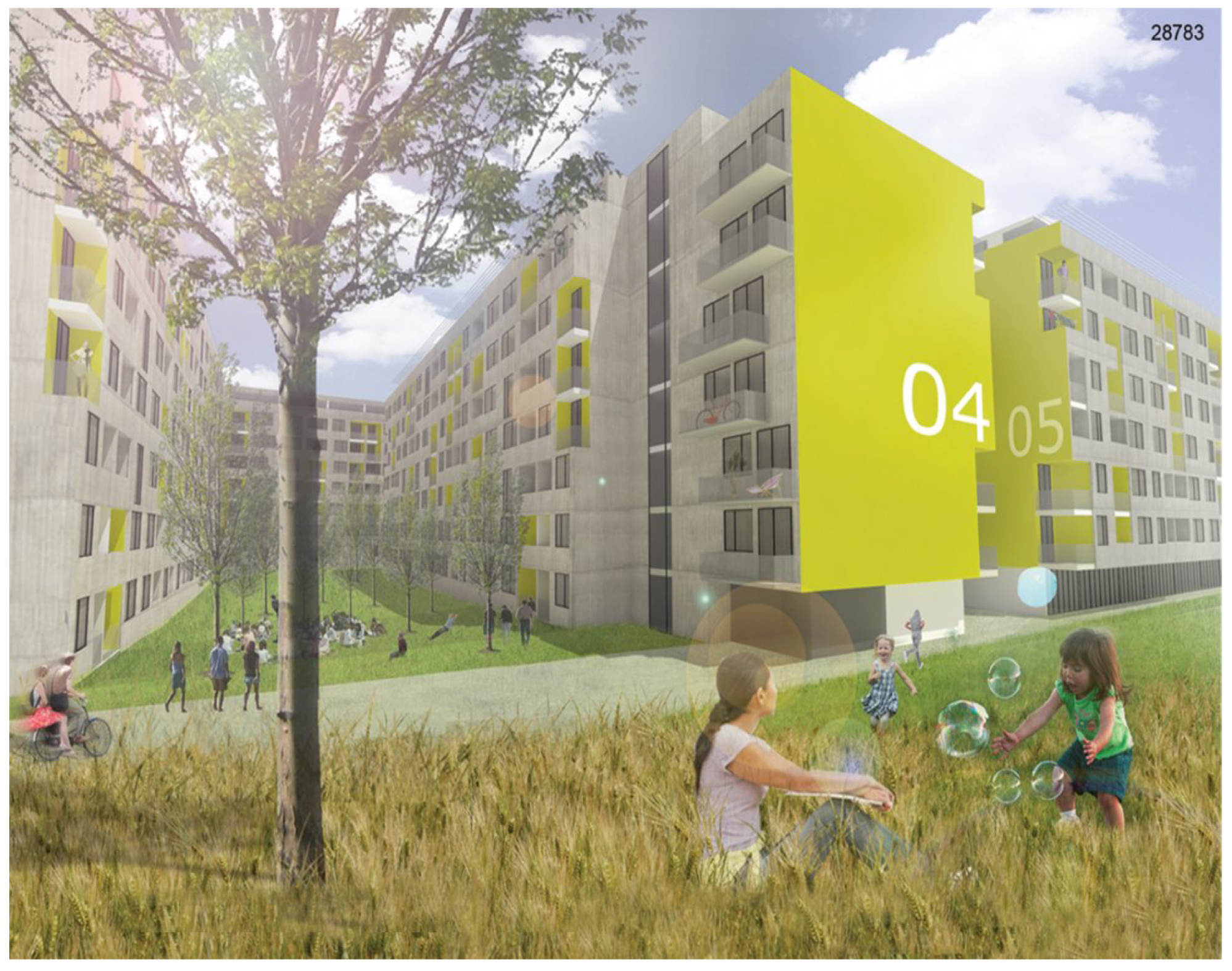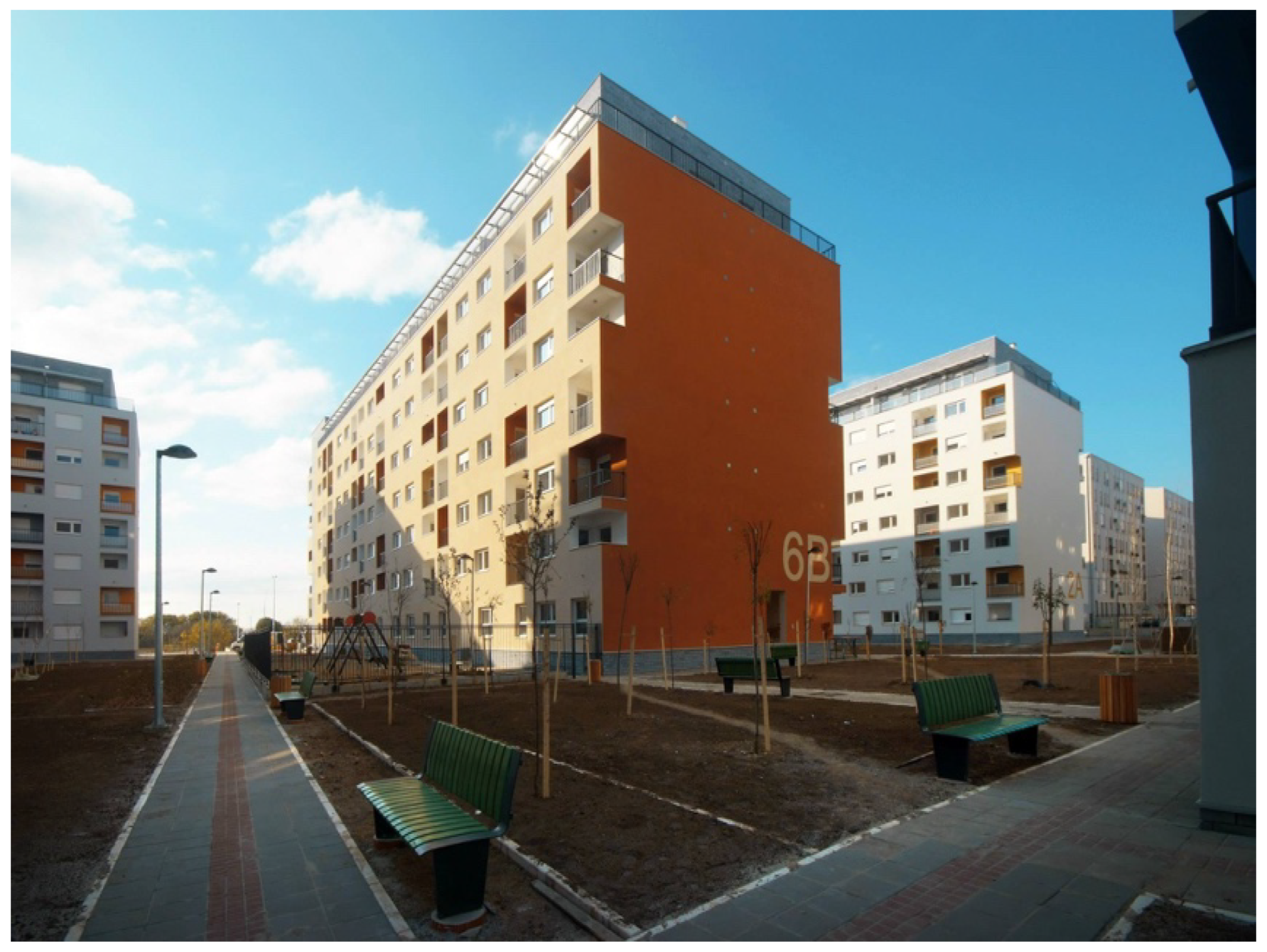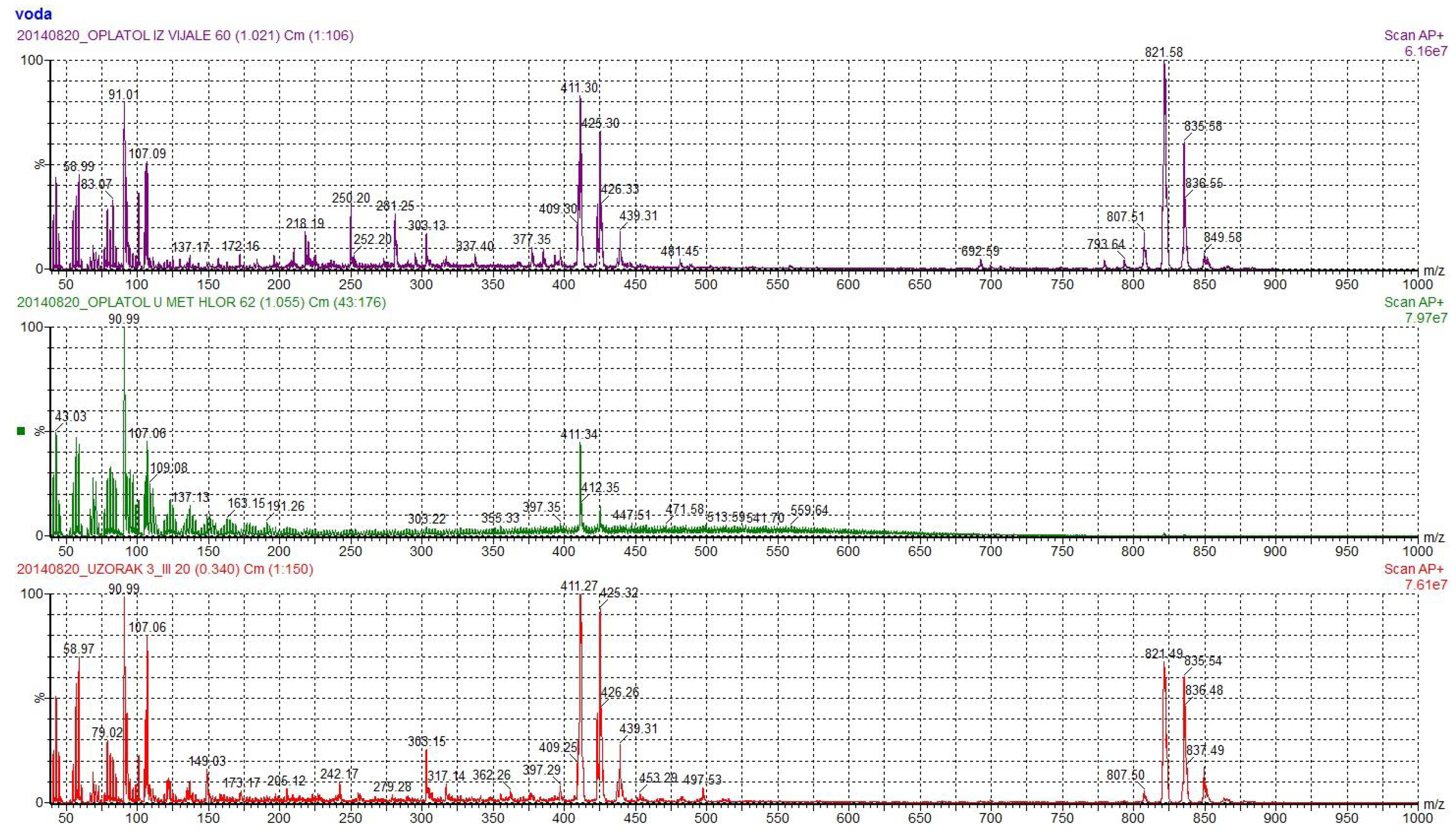1. Introduction
A safe, clean, healthy and sustainable environment is necessary for the full enjoyment of a vast range of human rights, including the rights to life, health, food, water and development. At the same time, the exercise of human rights, including the rights to information, participation and remedy, is vital to the protection of the environment [
1]. Based on these values, the United Nations (UN) Human Rights Council has developed a framework of principles on human rights that addresses the right to a healthy environment and looks forward to the next steps in the evolving relationship between human rights and the environment.
Based on recent World Health Organization (WHO) estimates, 22% of the global burden of disease is due to the environment [
2]. Noncommunicable diseases (NCDs), including heart disease, stroke, cancer, diabetes and chronic lung disease, are collectively responsible for almost 70% of all deaths worldwide [
3]. Within NCDs, air quality is a risk factor for several of the world’s leading causes of death, including heart disease, pneumonia, stroke, diabetes and lung cancer [
4], as well as impaired mental health [
5]. Indoor air risk includes different kinds of gas pollutants, including volatile organic compound (VOC) and the radioactive gas radon [
6]. Several studies show that long-term exposure to road traffic noise and ambient air pollution is associated with increased cardiovascular risk factors [
7]. Air pollutant concentration is increased in urban built environments, making air pollution from human activities the largest environmental health risk in Europe [
8]. The exposure to environmental factors plays an important role in the prevalence of NCDs and is even more problematic in the current pandemic period [
9]. The review of the main epidemiological studies that evaluate the respiratory effects of indoor air pollutants show the consistent short-term and long-term effects on asthma, chronic bronchitis and chronic obstructive pulmonary disease in indoor settings with poor air quality [
10].
On the other side, Sustainable Development Goals (SDGs) 3 and 11 also emphasize the importance of living in a safe and healthy environment [
10]. SDG 3
—Good health and wellbeing—endeavors to ensure healthy lives and promote well-being at all ages as essential to sustainable development, while SDG 11—
Sustainable cities and communities—advocates the future in which cities provide opportunities for all, with access to basic services, energy, housing, transportation and more.
Safe Community movement (SC) and Healthy City program (HC) are two major initiatives encouraged by the WHO to promote safety and health in communities [
11]. After merging similar safety and health promotion topics, Tabrizia et al. [
11] reviewed their relevancy and determined perfect matches which are reflected in risk-groups’ health and safety, child safety, disaster preparedness and response, home and buildings’ safety and health, and healthy and safe urban planning and design. In addition, relative matches were seen within traffic safety, violence prevention, work safety, safe public places, water safety, school safety, tobacco-free environment, mental well-being, addiction and substance abuse prevention, physical environmental quality and social support. Air quality is recognized only within the Healthy City program.
Based on this study, Tabrizia et al. [
11] developed the Safe and Health Promoting Community (SHPC) model comprising seven values and 14 main dimensions to improve safety and health in the community. Two of these deal with the outdoor and indoor environment and air quality: healthy and safe environment (healthy waste, clean air, healthy food, safe waste management and access to sewage system) [
5] and healthy and safe urban planning (safe urban furniture, safe public places, safe leisure places and safe home) [
10]. It is important to mention that public empowerment and participation are concepts that are highly focused on new theories of safety and health promotion, where health is seen as a political choice. It is about the kind of society we want to live in [
12].
Even though the basic function of a building is to shelter occupants from outdoor elements and provide a healthy, comfortable environment for productive activity, according to Lozano Patino and Siegel [
13], conditions in social housing units are usually substandard. This generally associates with higher exposure to indoor pollutants and, ultimately, negative health effects. The authors [
13] acknowledge the significance of this problem considering that social housing populations are generally more vulnerable due to age and/or socioeconomic status. Therefore, it is important to research the indoor air quality (IAQ) in these environments, especially because several studies found correlations between poor housing conditions and negative health outcomes [
14,
15,
16,
17].
Considering that people in urban areas spend up to 90% of their time indoors [
18] and there are specific sources of pollutants indoors in relation to the environment [
19,
20], there is a clear need to pay special attention to indoor air. Considering this, problems of indoor air pollution are increasingly recognized as important risk factors for human health, requiring different management approaches from those used for outdoor air pollution [
21].
Accordingly, by presenting an extreme example of bad IAQ in “smelly buildings” in Belgrade, Serbia, the purpose of this paper is to look at this specific and extreme case of indoor air pollution from an aspect of IAQ and facilities management (FM) in order to define recommendations for future prevention of these and similar situations. In accordance with this objective, the paper is structured as follows. The first part of the paper deals with the comparative analysis of the activities and services of FM and phases of critical building design control in achieving IAQ, as observed from the aspect of the linear model of the construction process. A brief overview of the context of public construction and the social housing complex in Serbia is presented in the second part of the paper to clarify the circumstances under which they were built. The third part of the paper includes a case study of “smelly buildings” in the Dr Ivan Ribar settlement in Belgrade, using the chronological course of events to indicate critical phases of the process. The final discussion part of the paper seeks to point out the need for the presence of FM during the entire construction process, in order to prevent certain situations that result in deterioration of IAQ.
3. Facility Management (FM), Sustainability Issues and Indoor Air Quality (IAQ)
Considering the general definition that facility management (FM) is a profession that encompasses multiple disciplines to ensure functionality, comfort, safety and efficiency of the built environment by integrating people, place, process and technology [
23], its possibilities in creating an environment that will meet the parameters of IAQ should be reconsidered. More specific, ISO/FIDIS 41001:2018 standard gives an updated emphasis on health: “FM integrates multiple disciplines to have an influence on the efficiency, productivity and economies of societies, communities and organizations as well as the manner in which individuals interact with the built environment. FM affects the health, well-being and quality of life of the world’s societies and population through services, management and deliveries” [
24]. This is especially important when comparing the phases and subcategories of critical building design control [
25] in delivering IAQ and services [
26,
27,
28,
29] covered by FM. In addition, according to Hodges [
30], “the facility manager is in a unique position to view the entire process and is often the leader of the only group that has influence over the entire life cycle of a facility.” This also includes the responsibility to manage individual and community health [
31,
32,
33].
At present, the central issues of FM practice consist of place or facility, people or user of the building, and process or activities in the facility [
26,
34,
35]. On the other hand, FM can involve several strategic issues such as property asset portfolio management, strategic property decision, and facility planning and development, which are related to policy and strategic planning of the organization [
26,
36,
37,
38]. Rondeau et al. [
39] state that facility managers’ “role is to ensure that the customer and the corporation have an on-time and on-budget project with the best possible site, space, facilities, furnishings and support systems to serve their needs today and tomorrow.” Accordingly, they are responsible for identifying, securing and working with qualified and high-quality service and product providers. The benefits of sustainability and green building practices in FM are well established [
30], however, some researchers [
40,
41,
42,
43] state that although awareness of sustainability is high, the participants’ efforts in implementation are low, due to different barriers [
44,
45]. Looking from the perspective of the sustainability ‘triple bottom line’, social and environmental factors often take a back seat to the overall strategy of the organization, due to the need to build at the lowest cost.
Keeping in mind the entire life cycle of the facility, facility managers are in the position to view the entire process [
30]. In this regard, different authors [
30,
46,
47,
48] indicate the strategic role of FM in achieving sustainability. This implies an integrative role [
48] of the facility manager in understanding the needs of the end-users of the facility and acting as an advisor to owners, designers, consultants and contractors about sustainability requirements in a project. In line with the sustainability aspects of the facilities, one group of the FM engagements includes activities related to the prevention and maintenance of IAQ.
In recent years, the more proactive approach of Urban FM has contributed to an increase in health and well-being [
49], which is important in helping the physical causes and symptoms of poor health, as well as the social, economic and environmental components of individual, community, and overall well-being. With community-based participation and collaborative governance processes, the co-creation processes capitalize on a local community’s assets, capital, inspiration and potential, resulting in both the enhancement of housing quality and the creation of quality public spaces [
50,
51]. This in turn contributes to people’s health, happiness and well-being, and the community’s resilience and sustainability [
50]. In addition, health-directed design interventions in cities and facilities are related and create scope for crossovers among different professions on the urban level [
33].
The American Society of Heating, Refrigerating and Air-Conditioning Engineers (ASHRAE) defines acceptable IAQ in its Standard 62-1989 as “air in which there are no known contaminants at harmful concentrations as determined by cognizant authorities and with which a substantial majority (90 percent or more) of the people exposed do not express dissatisfaction.” In order to act effectively in this area, buildings need to be viewed as a “habitat” in which the IAQ “ecosystem” model consists of the occupants, their activities, the air pathway and the heating, ventilation and air conditioning (HVAC) system, the building envelope, and its environmental setting [
22]. All the aforementioned elements comprise an interlinking model which cannot be dealt with individually.
Problems with the IAQ usually start with the building occupants’ complaints on discomfort, headaches, nausea, dizziness, sore throats, dry or itchy skin, sinus congestion, nose irritation or excessive fatigue [
22]. Depending on the character of the complaints, they can be divided into two groups, namely: sick building syndrome (SBS) and building related illness (BRI). SBS is a building that has a condition that can make its occupants uncomfortable, irritated or even ill, while BRI is deemed as a building associated with a clinically verifiable and diagnosable disease. According to Bas [
52], “buildings may have as many as 900 contaminants indoors with thousands of sources—including new furniture, cleaning agents, smoking, new building materials, pesticides and even perfume and other cosmetics.” Many contaminants are microbiological or otherwise organic, triggering asthma and allergies.
To prevent the indoor air pollution that could be related to the building construction process, Levin [
25] identified mayor phases and subcategories of critical building design control that cover site planning and design, overall architectural design, ventilation and climate control, materials selections and specifications and construction process and initial occupancy.
Comparing selected frameworks in prevention of indoor air pollution [
25] and FM services and responsibilities developed by Chotipanich [
26], Rondeau et al. [
39], Barret and Finch [
37] and Jensen et al. [
53], individual FM activities were identified which have a decisive role in preventing the occurrence of indoor air pollution. These include:
Identification of user needs and definition of air quality performance measures within the briefing phase of the construction process;
Architectural, engineering and construction management design, planning and performance as well as users’ needs and preferences within the design phase;
Purchasing, contact control and negotiations, delivering performance targets and creation of trust in the contract phase; and
New construction/reconstruction and construction management, applying the building codes/standards and FM’s role as “facilitator” within the construction phase (see
Figure 2).
In addition to pollutants from the external environment, construction materials and materials used for interior design and furnishing, the so-called subsidiary means used for construction, also have an impact. Dealing with the issues of the construction and subsidiary materials, Burroughs and Hansen [
22] identified building materials of particular concern divided in accordance with the construction phase (see
Figure 3).
It is important to mention that the effects of many of chemicals emitted from the products are still not fully understood, but many are known or suspected human irritants, and some are suspected human carcinogens. Considering all those mentioned, the activities of FM must cover the process of commissioning, which is emerging as a critical component of successful completion of the construction process and involves the aggressive overview of each stage of the construction project in order to assure the conformance of the project to the design, resulting in a building that performs according to intent [
22]. On the other side, every case is specific and may indicate distinct situations and circumstances that lead to the occurrence of indoor air pollution, the knowledge of which could improve the construction process and prevent future cases and similar situations.
4. Social and Affordable Housing Legislative in Serbia
In Serbia, social housing is defined in the Law on Social Housing [
54] as “housing of an appropriate standard that is provided with state support to households that for social, economic and other reasons cannot provide housing under market conditions.” It has a “housing of an appropriate standard that is provided with state support to households that for social, economic and other reasons cannot provide housing under market conditions.” It has a “residual” role [
55] which means it is primarily intended for the most socially vulnerable categories, unlike in some developed European countries. Master Plan of Belgrade (MPB) 2021 from 2003 [
56] played a key role in introducing and defining the concept of social housing in Serbia, following the example of developed European countries. This Plan identifies socially vulnerable categories of society that need assistance in finding housing and provides certain guidelines for design and construction standards, as well as criteria for determining locations. The Plan has defined a list of 58 locations with a total area of 228.6 ha planned for social housing in Belgrade.
The adoption of the Law on Social Housing in 2009 was followed by the National Social Housing Strategy [
57] and The Decree on Standards and Norms for Planning, Design, Construction and Conditions for the Use and Maintenance of Apartments for Social Housing [
58]. This is important to mention because in the period from 2001 to 2014, several social housing programs were implemented in Serbia, despite the lack of a defined comprehensive housing system, as well as appropriate technical regulations for planning and designing this type of housing [
55,
59].
The program of construction of solidarity apartments 2001–2005 was implemented by the Assembly of the City of Belgrade with the public fund for financing the construction of apartments. The project of constructing 2000 socially non-profit apartments in Belgrade started in 2005 by adoption of the Decision on the conditions of sale of 2000 socially non-profit apartments in Belgrade [
60]. Since social housing is seen as a good of public interest, a number of public architectural and urban competitions were announced in cooperation with the Society of Architects of Belgrade. On the other side, public competitions are considered directly related to the public interest, including the widest professional public, and therefore require the highest level of professional and social responsibility. However, in the competitions conducted by the City of Belgrade, the topic of social housing was mostly problematized from the aspect of economy, without considering other specific requirements in that housing category [
55].
This is not surprising because, according to Djokic et al. [
59], “social housing has been often seen as a measure of the social care system, a tool of poverty reduction, in achieving social justice and ensuring the fundamental human right to housing, but seldom as an instrument of economic development.” However, this should not limit the possibility of implementing a strategic framework for improving environmental sustainability in housing with increased resilience and adaptability of housing, the provision of healthy living conditions and a healthy environment, and the reduction of waste from the use of heating and cooling energy, coupled with carbon dioxide emissions, reduction of water and soil pollution, adequate use of materials and waste recycling.
The existing technical regulations for the planning, design and construction of social housing in Serbia do not sufficiently consider specific guidelines in the field of energy optimization and IAQ that would be usable in the development of planning solutions, which is a significant limitation [
61]. This is seen in the gap between the recommendations of sustainability in the planned development of the social housing sector in Serbia and their practical application. In addition, “there is a large gap between the inherited experiences of “quantitative” satisfaction of housing needs through mass state housing and “qualitative”, long-term goals of sustainable development” [
61]. Furthermore, there are no regulations aimed at improving and maintaining indoor air quality. Unlike outdoor air quality, the monitoring and assessing of IAQ are not regulated by legal acts, only guidelines and recommendations related to certain pollutants.
It is also necessary to mention that public buildings constructed within the period between 2010 and 2012 were built in accordance with the special conditions, applying the Law on Encouraging the Construction Industry in Serbia in the Conditions of Economic Crisis [
62]. This Law had a fixed term with emphasis on encouraging the development and employment of domestic construction companies and providing liquidity to this sector to strengthen the development and employment of domestic companies engaged in the production of construction materials. The buildings covered by this Law are fully or partially financed from the budget of the local self-government unit, the autonomous province (i.e., the Republic of Serbia) and include schools and kindergartens, hospitals and other health facilities, flats, sport objects, facilities for the purpose of performing cultural activities, highways and other state roads and other objects of public importance. In accordance with the above, the construction of facilities of public interest were completed exclusively by domestic construction companies and with domestic construction materials (70% of the total amount of construction materials and equipment).
5. Dr Ivan Ribar Settlement and “Smelly Buildings”
At the initiative of the City of Belgrade in 2010, the realization of the Program for the construction of social and affordable apartments at the location Dr Ivan Ribar in New Belgrade continued. As was the case with other locations planned for this purpose, an architectural-urban competition was announced by the Association of Belgrade Architects for this location in 2011. In total, 53 works were submitted to the competition, and the first prize was awarded to the RAUM architects from Belgrade [
63]. According to the jury, RAUM’s proposal (see
Figure 4) met all the criteria set by the tender conditions, especially in terms of the expected structure, square footage and organization of housing units in the buildings.
Housing units are organized into six identical buildings of two-tract type, considered a rational solution from the aspect of project implementation. By forming two types of inner courtyards, a high quality of housing was achieved in the settlement, namely green areas with rest areas and a modified hilly relief that regulates the views and provides privacy and peace [
63]. The free area on the western part of the plot, which is unfavorable for construction, is arranged as a green park area where sports and recreational facilities and sports fields are located.
The project was realized with minor changes (see
Figure 5) by the Construction Directorate of Serbia according to the first-prize winning competition solution, and the first apartments were occupied in October 2013. As planned, the apartments in this complex belong to the categories of social and affordable housing but are built so that there is no difference in terms of quality of construction.
The main investor of this project was the Construction Directorate of Serbia (CDS), which was also responsible for the sale of the apartments, as well as for guaranteeing their quality. According to the Law [
62], the CDS engaged several domestic construction companies to construct particular buildings within the complex. The engaged companies independently carried out the stages of the process on individual facilities that were the subject of their work, which included the procurement and purchase of construction materials and equipment produced in Serbia (70% of the total amount of construction materials and equipment). The domestic construction company, Koto d.o.o., was engaged and responsible for the building of Buildings 1 and 3, which would later be known as “smelly buildings.”
5.1. “Smelly Buildings”
Following the archives of digital editions of the Serbian daily press and the Beobuild forum [
64], the first complaints about the unpleasant smell in the apartments appeared in July 2014. These were preceded by announcements of satisfied apartment owners who moved in during October and November 2013. At that time, most of the discussions at the forum with the topic, “State housing—Settlement in Block 72 (Dr Ivana Ribara)” [
64], were about the construction process, the characteristics of apartments, the aesthetics of the accepted solution and the procedure for redistribution of apartments to different categories of tenants.
The problem occurred in 220 apartments within Buildings 1 and 3 (No. 80, 82, 100 and 102), in which the tenants complained of an extremely strong, unpleasant smell of unknown origin [
65]. The mentioned buildings were named “smelly buildings.” After addressing the Construction Directorate of Serbia, which was responsible for the construction and sale of these apartments, there was a need for a quick response to prevent potential negative effects on the health of tenants. To determine the causes and character of the harmful vapors, the Vinca Institute of Nuclear Sciences, Laboratory of Physical Chemistry and the Institute of Public Health of Belgrade were engaged.
The analyses were performed during July and August 2014. Sampling and testing of air quality in 24-h samples were made at the following sampling sites: indoors in twenty apartments in the subject buildings, one grocery store, control measurements in two apartments where the presence of unpleasant odors was not detected and outdoors at two sampling sites near the subject buildings [
18]. Qualitative and quantitative analysis of IAQ in apartments and buildings in which the presence of unpleasant odors was found, as well as control measurements, included the following parameters: formaldehyde, acrolein, polycyclic aromatic hydrocarbons (PAH) of solid and gaseous phases, volatile organic compounds, benzene, toluene, ethylbenzene and isomers of xylene (BTEX) and phenolic compounds. Key results arose from the analysis of the polyurethane foam used for gaseous phase PAH sampling by the GC-MSD technique. This analysis showed the presence of phenols and phenolic compounds, namely phenol, 3-ethyl phenol and 3-methyl phenol, only in the samples taken from the apartments where characteristic odors where reported.
Tests carried out at the Vinca Institute for Nuclear Research showed that the pollution comes from the oil used to coat the formwork boards used for pouring concrete elements [
66]. A part of the report of the Vinca Institute, which illustrates the origin of pollution, is shown in
Figure 6. Mass spectrum of tested samples confirms the presence of phenol, 3-ethyl phenol and 3-methyl phenol in oil and concrete samples, and as fingerprint, confirms the source of contamination.
Comparison with the control measurements showed that the presence of phenolic compounds in the indoor air, as well as the significant presence of phenanthrene, stand out from all the examined parameters. The presence of formaldehyde, acrolein, toluene and PAH of gaseous phases, except phenanthrene, was observed in slightly higher concentrations than in control measurements in ambient air, but, although somewhat higher, the values did not deviate significantly from those observed in control apartments where characteristic odors were not observed. Higher concentrations of these pollutants in indoor air are characteristic of newly built facilities equipped with new interiors [
18].
The analysis of the content of the disputed oplatol oil and concrete samples, as stated in the report of the Vinca Institute, unequivocally established that the source of the unpleasant odors was concrete poured into the disputed facilities, while the origin of the pollution was oplatol oil used to coat the formwork boards used for pouring concrete elements. Unlike phenanthrene, which almost certainly originates from contaminated concrete but may have other sources, the presence of 3-ethyl phenol and 3-methyl phenol is characteristic of the indoor air of buildings in which the disputed oplatol was used and can be used as a kind of marker (fingerprint) for oplatol-induced pollution.
Based on the results of the conducted examinations, the expert team at the Institute of Public Health of Belgrade assessed that the apartments in which unpleasant odors were felt did not meet the sanitary-hygienic conditions for permanent residence of people [
18].
The Toxicology Department of the Military Medical Academy (MMA) in Belgrade was also engaged to conduct an analysis of the health condition of the occupants of these facilities. The testing covered one-third of the tenants and the results showed that the values of phenol and hippuric acid in urine samples were significantly increased in samples from several tenants, especially children, as well as in samples taken from workers who were exposed to these substances at their workplaces [
67].
A similar problem was reported in several other apartment buildings in Belgrade, Novi Sad, Niš and other cities in Serbia, as well as the Bora Stanković theatre in Vranje and a stem cell bank in Belgrade. All these buildings were built around the same time when a disputable batch of “oplatol” was on the market. This ‘epidemic’ spread all over Serbia during the few months when the notorious batch of oplatol was used. Even though only one batch of oplatol was contaminated, it caused enormous damage which illustrates how a little negligence can produce massive financial and emotional (tenants) damage.
5.2. Problem Solving Process
Immediately after receiving the results of the mentioned analyses, the Construction Directorate of Serbia (CDS) initiated a series of procedures intended to solve the problem. Everything was done in cooperation with the tenants, in order to meet their demands. For the needs of internal communication, the citizens of this settlement launched a website [
65] as well as a blog related to the topic of smelly buildings, called “poisonous buildings” [
68].
Given the situation, two problems had to be resolved—resettlement and temporary or permanent accommodation of the occupants of the problematic facilities, and the establishment of a procedure for further treatment of these facilities. Negotiations between the tenants and the Directorate covered a number of topics that needed to be agreed upon, in order to further treat the tenants as clients of the Directorate. Accordingly, the Directorate offered to finance the rental of the apartment until the buildings were rehabilitated (five euros per square meter of the purchased apartment, with the possibility of increasing the amount), to pay relocation costs, to pay a deposit for renting an apartment and an agency commission and all overhead costs in the purchased apartment in two smelly buildings. On the other side, the tenants asked that the problem in the buildings not be treated as an unpleasant odor, but as a danger to human health, to determine whether “oplatol” or some other substances such as concrete additives really evaporate in the apartments, and to ensure that the Directorate offered clear criteria and methods of rehabilitation to convince the tenants that their apartments will be safe. In order to find the solution for treating the subjected buildings, the CDS has consulted several scientific institutions such as University of Belgrade—Faculty of Technology, Vinca Institute of Nuclear Sciences, the Royal Institute in Belfast and the Heidelberg Institute. However, it was determined that there is no ready solution to eliminate phenol. A special problem in the search for a solution was the fact that the chemical transformation of detected pollutants over time is very possible and that each treatment, as well as the passage of time, carries with it the possibility of a new generation of pollutants originating from the initial pollution [
18].
After a two-year process of negotiating with apartment owners and seeking solutions for the rehabilitation of buildings, the CDS decided to build new facilities for property owners, and to renovate the disputed buildings by ‘extracting’ pollution from them based on the methodology developed by Vinca Institute of Nuclear Sciences. The rehabilitation plan includes chemical treatment with hydrogen peroxide, treatment with UV lamps and ozone of all concrete walls where the presence of pollutants was detected, which originated from the coating oil [
67].
Research has also shown that the state institutions, the Ministry of Construction, Transport and Infrastructure of the Republic of Serbia and the CDS, have accepted responsibility because the harmful insulating material oplatol was used in the construction of that part of the settlement. The core of the problem is the retention of harmful materials on the market and the possibility of their trade, but also the issue of the work of inspection bodies and bodies that control the trade and issue certificates for certain types of materials.
Six years after the occurrence of the problem, the works on the rehabilitation of the “smelly buildings” are nearing completion. The management of the CDS has not yet decided on the purpose of these buildings, but it is assumed [
69] that one building will function as a hostel, while apartments in another building will be rented.
6. Discussion
Dr Ivan Ribar settlement in New Belgrade and its “smelly buildings” is one of many examples of the so called “least cost” mentality, which has led to construction decisions that prioritized cost savings, but whereby multiple prices of the entire investment were ultimately paid due to omissions. In this case, it was a legal obligation to purchase certain material from a domestic manufacturer whose production was not adequately controlled. This led to the appearance of a certain amount of material that did not correspond to the quality for which there was a certificate but possessed substances that later turned out to be toxic and could endanger the health of the inhabitants.
Considering the linear model of the construction process, the problem occurred within the contract phase, during the purchase of the specific type of product. The case of smelly buildings indicates that stricter control of products used in the construction of facilities and interior equipment, and especially the so-called byproducts, is needed. The significance of the case of the smelly building is in the fact that it drew the attention of the scientific and professional public to the importance of IAQ control, but also to the importance of outdoor air quality control because these two are inextricably linked.
These experiences indicate the need to further work on improving the existing legislation governing the field of air quality control, especially in light of the emergence of a new generation of pollutants, as well as the adoption of legislation and development of guidelines for IAQ. Special attention should be paid to the critical group of materials used in and during construction, in order to investigate the various effects, they may have on IAQ, and thus on endangering the health of residents.
Having in mind the complexity of the construction process and the domain of IAQ, FM with its scopes and activities have the potential to accompany all phases, including the preparation of short-term and long-term FM maintenance plans. Facility managers and those with facility-related responsibilities must make the risk analysis, which also addresses indoor environmental risks. This includes audit reports that trigger new maintenance needs, but, more importantly, to change the protocols and start immediate actions to prevent IAQ related incidents from occurring in the first place. Auditing health and safety issues should create measures to fulfil the regulatory requirements and control regular measures.
The research indicates the importance of the engagement of facility managers during the entire construction process and the building life cycle as an independent actor. This is especially important in contract and construction phases. In the contract phase, FM could control purchasing, contracting and negotiation processes to achieve adopted building and quality performance targets. On the other side, independent construction management could include control in the application of building codes and standards, as well as checking the quality of materials and equipment.
This is especially important for public investments such as social and affordable housing complexes like in Belgrade’s case of the Dr Ivan Ribar settlement, which is not an isolated case of public construction facing this problem. In the period from 2012 to 2015, cases of reconstruction of the theatre and maternity hospital in Vranje, a residential complex in Novi Sad and a stem cell bank in Belgrade were recorded. On the one hand, the situation can be seen from the aspect of irresponsible disposal and spending of public funds, and on the other hand, it is necessary to allocate additional funds to solve the problem. The example of the Dr Ivan Ribar residential complex pointed out the following groups of additional costs and material losses:
Researching the problem and determining the methodology that will be applied for its remediation, including engagement of domestic and foreign scientific and professional institutions
Assistance to aggrieved tenants until the final solution is found, including
- ○
costs of the rentals
- ○
relocation costs
- ○
deposit for renting an apartment
- ○
and agency commission costs
- ○
all overhead costs in the purchased apartment
New building design and construction, into which a certain number of damaged tenants will move
Rehabilitation and the remediation of the problem in existing facilities
Object conversion and new usage
In addition to the above costs, one should keep in mind the creation of a bad reputation for the entire settlement, which caused a reduction in the market price of real estate, but also stress and suffering for tenants and their families over a period of several years (endangered health, relocation, postponement of the final solution, negotiations, etc.).
On the other side, FM practice is likely to be case-specific by nature, dealing with the diversities of facility, organization, business sector, surrounding environment and context, and circumstance [
26]. From that perspective, Urban FM is very important to improve citizens’ health and well-being, especially from the perspectives of healthy buildings, accessibility and services to the vulnerable population. Using the community-based approach of FM is important to recognize the risks, enable the enhancement and contribute to a healthier society. Similarly, understanding the needs of neighborhoods requires engaging with citizens, leading to their empowerment to understand, recognize and report the sickness parameters, and consequently, to better support a healthy environment.
